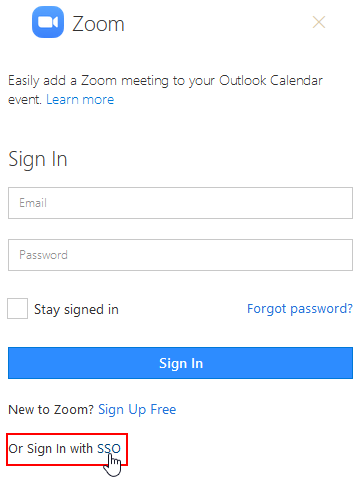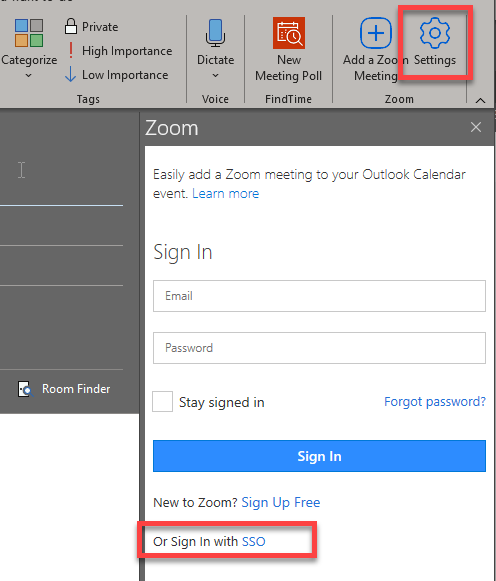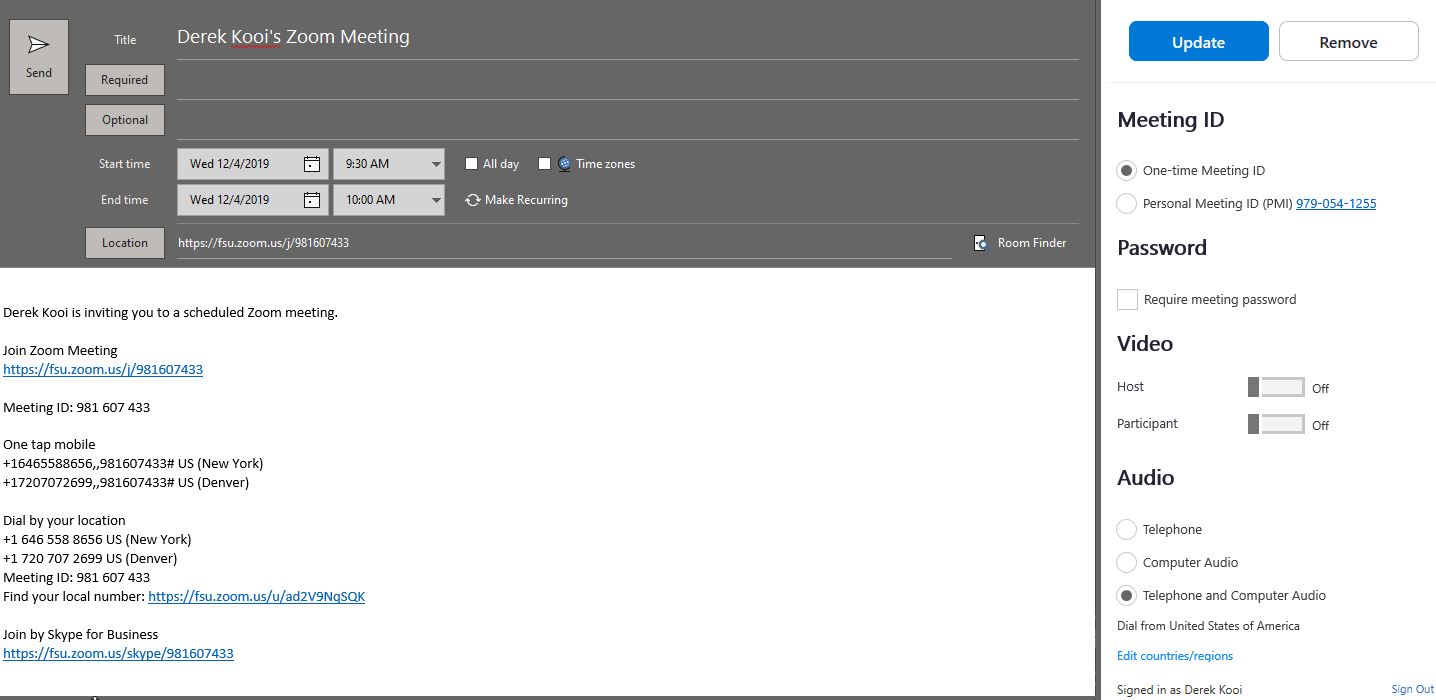Summary
The Zoom for Outlook add-in is designed to allow you to add Zoom meetings to any new or existing calendar events, edit or update Zoom meeting settings, and even schedule meetings on behalf of other Zoom hosts within Outlook web and desktop apps.
Body
Users can schedule a Zoom meeting without leaving Outlook. Just install the Outlook add-in, and you can use the Zoom menu item to add a zoom link to any meeting, as you schedule them. Please see the following sections for instructions for the Outlook web app and Outlook desktop application (for Mac and PC).
In the Outlook Web App (OWA)
- Open your Calendar in the Outlook Web App and click New event.
- Fill in your meeting details (Title, Attendees, Date/Time, etc.).
- Click the three dots in the top toolbar, select Zoom, and then select Settings.

- A Zoom window will appear asking you to sign in. Use the link at the bottom to Sign in with SSO.

- In the next field, enter UND then click Continue.

- If you receive the Zoom wants to display a new window prompt, click Allow.
- Sign In with your NDUS credentials.
Note - Signing in to the Zoom for Outlook add-in should only be required once during the initial setup.
In Microsoft Outlook
- From the Outlook Home tab, create a new meeting invitation.

- Select the Settings button from the Zoom section along the right.

- A Zoom window will appear asking you to sign in. Use the link at the bottom to Sign in with SSO.

- In the next field, enter UND then click Continue.

- Sign In with your NDUS credentials.
Note - Signing in to the Zoom for Outlook add-in should only be required once during the initial setup.
Add a Zoom Meeting
- Now that the add-in is connected to your Zoom account, configure your meeting settings before clicking Add Zoom Meeting.

- By clicking Add Zoom Meeting, the meeting information will be automatically added to the body of the Outlook invitation. The Zoom meeting URL is also added to the location for the invite.

- You can treat this like any other Outlook invitation and set availability, occurrence, and categorize as normal.
- Once the meeting is created, you will be able to change the meeting settings or cancel to remove the zoom meeting information from your invitation.
For more information on the add-in, please visit the Zoom for Outlook Add-In Support Article.
Contact Us
Chat with Tech Support Submit a Ticket Call 701-777-2222